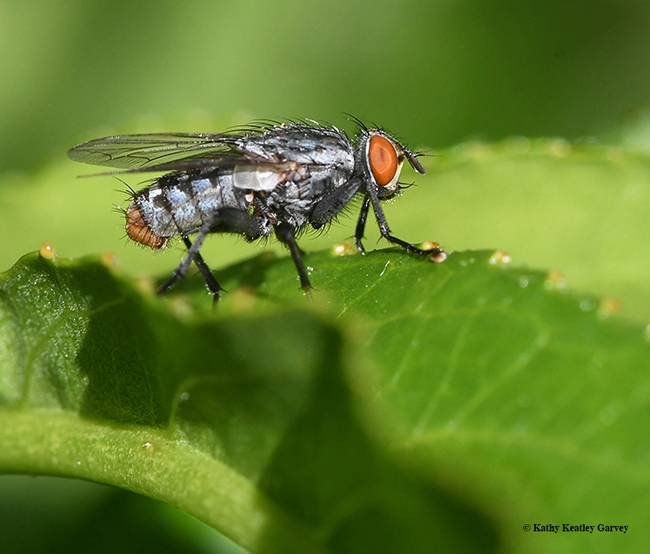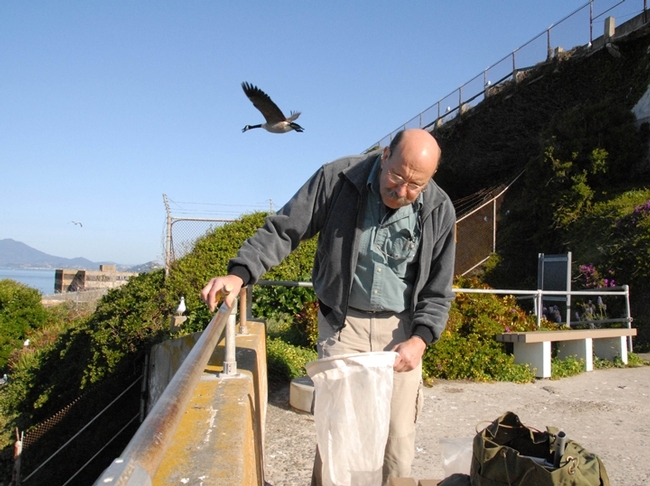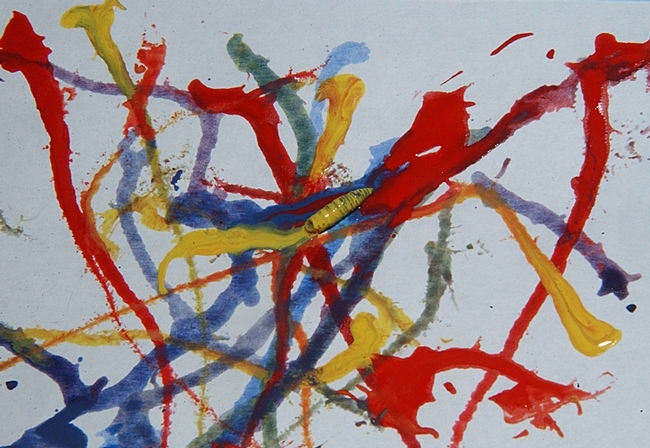- Author: Kathy Keatley Garvey
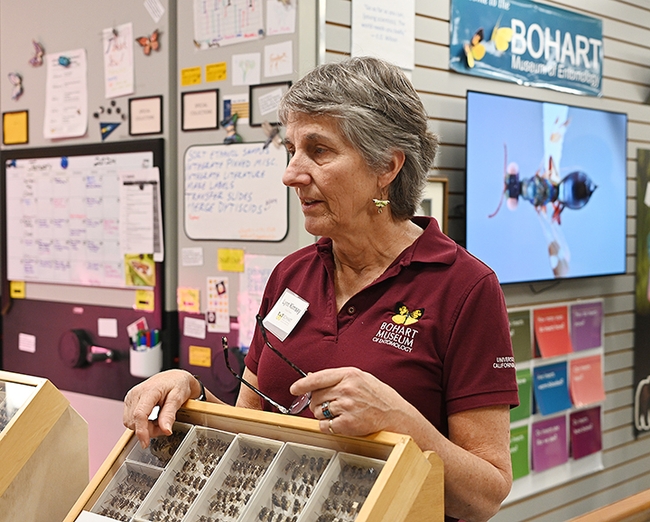
It's the birthday anniversary of noted entomologist Richard "Doc" Bohart (1913-2007), founder of the Bohart Museum of Entomology, University of California, Davis.
So when the Bohart Museum hosts a public open house (theme:"Museum ABCs: Arthropods, Bohart and Collecting") from 1 to 4 p.m., Saturday, Sept. 28, plans also call for a tribute to him and his work.
"Doc" Bohart founded the insect museum in 1946 and served as its first director; compiled 32 years on the entomology faculty; and became an internationally recognized entomologist and author.
Born Sept. 28, 2013 in Palo Alto, Richard began collecting butterflies at age 7. "He and his brother George 'Ned' Bohart collected butterflies for a local collector to earn pocket money," according to UC Davis distinguished professor emerita Lynn Kimsey, who directed the Bohart Museum for 34 years until her retirement on Feb. 1, 2024.
Bohart attended UC Berkeley, receiving three degrees in entomology culminating in his doctorate in 1938. He joined the UC Davis faculty in 1946 and chaired the Department of Entomology from 1956 to 1965. He taught general entomology, medical entomology, systematics, and agricultural entomology.
According to the Academic Senate's memorial, Bohart "contributed substantially to the world literature of the insect Order Hymenoptera, which included two landmark books, Sphecid Wasps of the World (with A. S. Menke), and The Chrysidid Wasps of the World (with L.S. Kimsey), as well as 230 journal articles and four other books on wasps and mosquitoes, including the second and third editions of The Mosquitoes of California (the second with Stanley B. Freeborn and the third with Robert K. Washino). During his career, he described more than 200 new species and genera of insects."
Today the Bohart Museum is the home of a global collection of eight million insects; a live petting zoo (including Madagascar hissing cockroaches, stick insects and tarantulas); and an insect-themed gift shop, stocked with T-shirts, hoodies, jewelry, books, posters, and collecting equipment. The new director, only the third since 1946, is Professor Jason Bond, the Evert and Marion Schlinger Endowed Chair in Insect Systematics, UC Davis Department of Entomology and Nematology, and associate dean of the UC Davis College of Agricultural and Environmental Sciences.
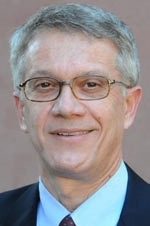
"His teaching and collecting activities resulted in the development of one of the finest collections of stinging wasps in the world in the Bohart Museum of Entomology," Kimsey said. "A great deal of this material was obtained through his collecting and that of his students. During his tenure, the museum collection grew from 500 specimens to 7 million, a span of some 60 years. Chancellor James Meyer dedicated the entomology museum in his name in 1983. The R. M. Bohart Museum moved into a new building in 1994 and was dedicated by Chancellor Larry Vanderhoef."
Open House. The open house, free and family friendly, will include "an overview of terrestrial arthropods which encompasses everything from insects, arachnids, millipedes, isopods and centipedes," said Tabatha Yang, education and outreach coordination. "We will also showcase some of the trapping/catching methods we use, for example, nets, lights, pitfall traps and malaise traps."
Pinning, spreading and curation demonstrations are planned "so people know how to take care of and preserve a dead arthropod for research or for a personal collection," Yang said. "People sometimes find a dead dragonfly or a butterfly on the ground and we often get asked how they can preserve it."
"We also get asked a lot of questions about our own collection and why the specimens don't decay," she added. "We will highlight the different curation techniques from pinning, point mounting, preserving in alcohol and mounting on slides."
Entomologist Jeff Smith, curator of the Lepidoptera collection, which encompasses some 750,000 specimens, will demonstrate and discuss the various steps of relaxing, pinning, spreading, and labeling moths and butterflies.
A Bohart volunteer since 1998, Smith has spread the wings of some 180,000 moths and butterflies, typically 6,000 or more each year for the past 30-plus years. He has crafted and donated some 2,475 wooden specimen drawers, including 110 so far this year. He also has donated some 100,000 specimens (primarily butterflies, moths but a few other insects, including beetles) to the Bohart Museum.
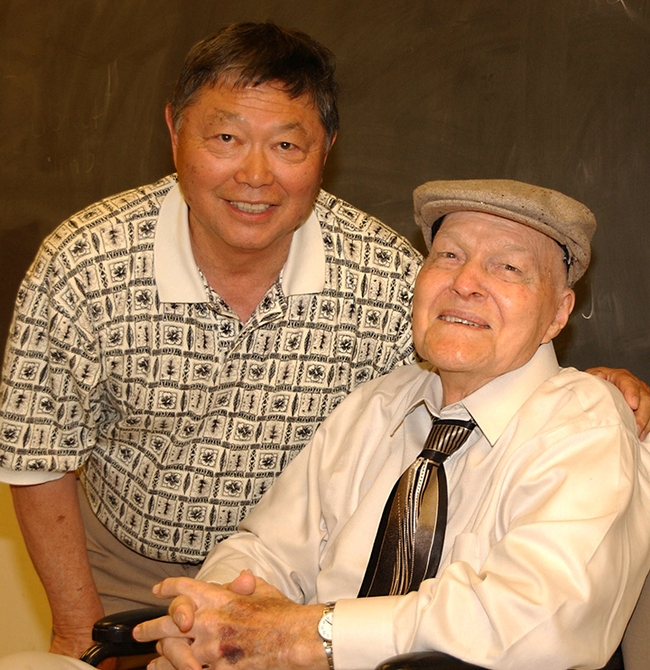
- Author: Kathy Keatley Garvey
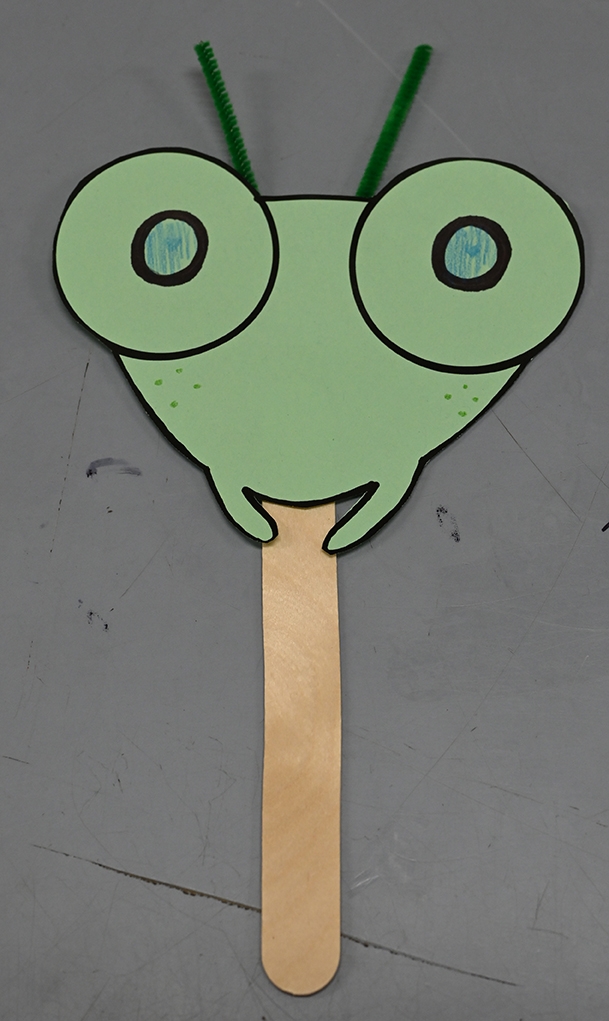
"A praying mantis on a stick?" you ask. 'Isn't the mantis the predator that grips its prey on its spiked forelegs? How do you get a mantis on a stick?"
Well, you cut a piece of paper to resemble a mantis head, draw its compound eyes, affix a popsicle stick to its mouth, add pipe cleaners for its antennae, and voila, there you have it, a "Mantis on a Stick."
That was the family arts-and-craft activity at the Bohart Museum of Entomology open house on "Praying Mantises," held last Sunday afternoon, Aug. 27.
While scientists discussed mantises and showed specimens to the guests, youngsters headed over to the arts-and-crafts table. (Later they would engage with the scientists.)
Bohart intern Melody Ruiz, a third-year entomology major at UC Davis, staffed the arts-and-crafts table. She invited children, youths and adults to create a mantis. They could change the compound eyes to smiling eyes, sorry eyes, frowning eyes, and other facial expressions.
Soraya Qaqunah, 4, of Davis, looked at the box of crayons, selected her choices, and began to color the eyes. Her brother Elias Qaqunah and his friend each chose to turn a mantis head into a tarantula head after admiring the nearby Mr. Curly, the Tarantula. Elias decided his tarantula should be yawning. "How to you draw a yawn?" he asked.
Meanwhile, Julietta Millsop, 3, of Davis, and Maya Lee, 4, of Woodland eagerly finished a Mantis on a Stick.
Ruiz, who coordinates the arts-and-crafts activities at the Bohart Museum open houses with Tabatha Yang, the Bohart's education and outreach coordinator, delights in helping others and sharing her knowledge of insects. "I've always had a curiosity for insects as they play such a big part of the world we share," Ruiz said. "I love being able to talk about the wonders of entomology with anyone who visits the museum; it makes me happy being able to be connected to a memory of learning something new. Studying entomology allows me to work in an environment where you truly learn something new every day."
The Bohart's next two fall open houses are from 1 to 4 p.m. on Saturday, Sept. 23 and on Saturday, Nov. 4. The September open house is themed "Household Vampires." It will feature fleas, ticks and bed bugs. The November open house theme is "Monarchs." It will showcase monarchs, milkweed, scientists and research. All open houses are free and family friendly.
The Bohart Museum, located in Room 1124 of the Academic Surge Building, 455 Crocker Lane, UC Davis, houses a global collection of eight million insect specimens, plus a live petting zoo and an insect-themed gift shop, stocked with t-shirts, hoodies, books, posters, jewelry, collecting equipment and more. Professor and renowned entomologist Richard Bohart (1913-2007), a member of the UC Davis Department of Entomology (now the Department of Entomology and Nematology) faculty for more than 50 years, founded the museum in 1946.
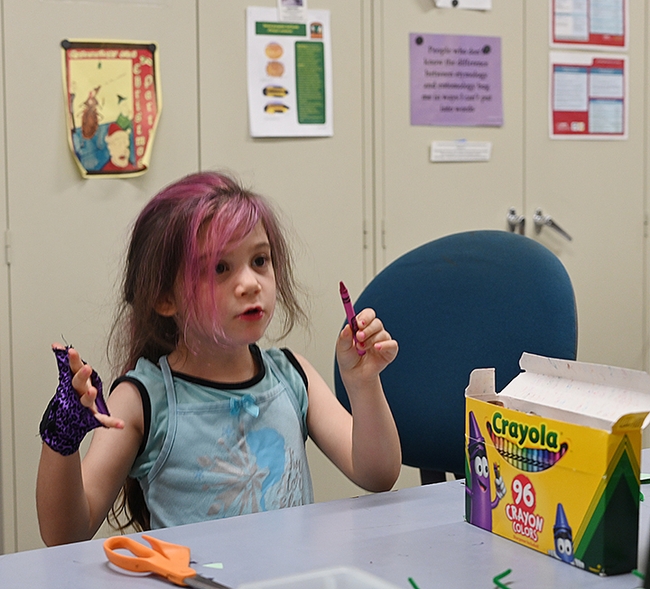
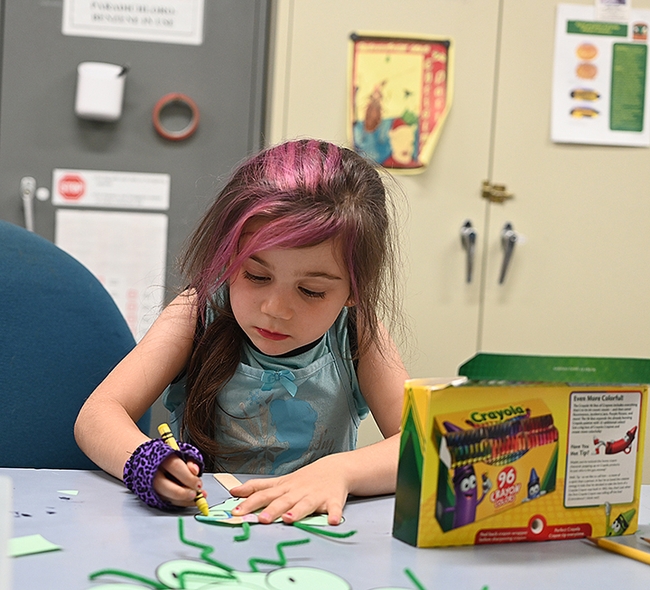
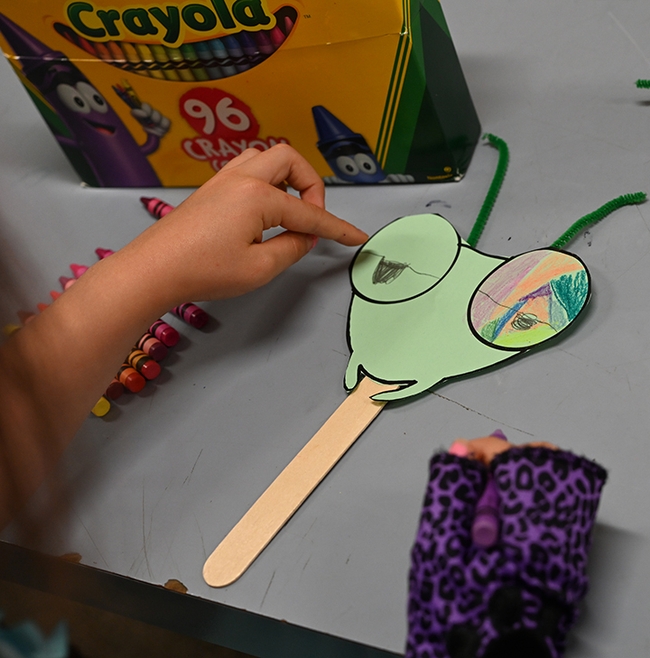
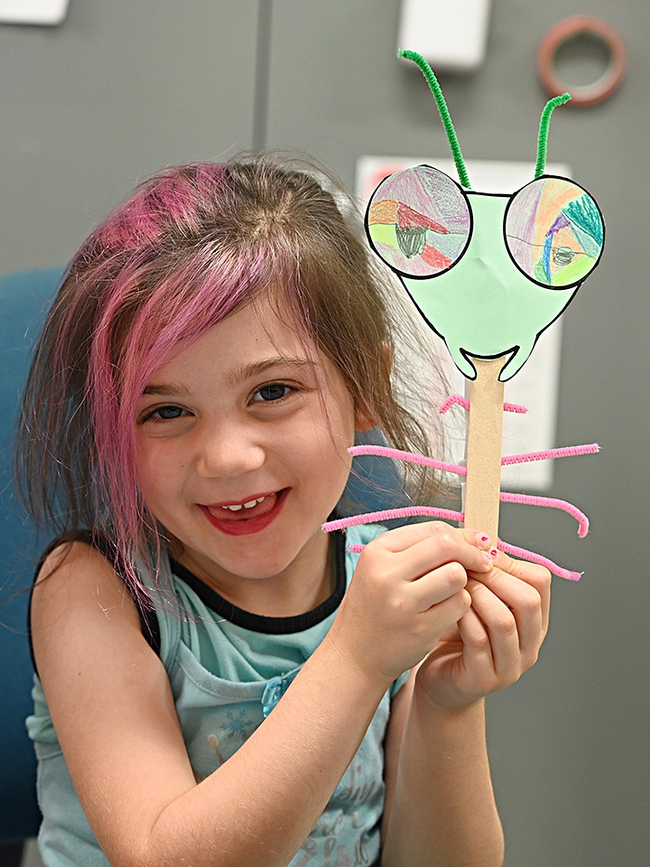
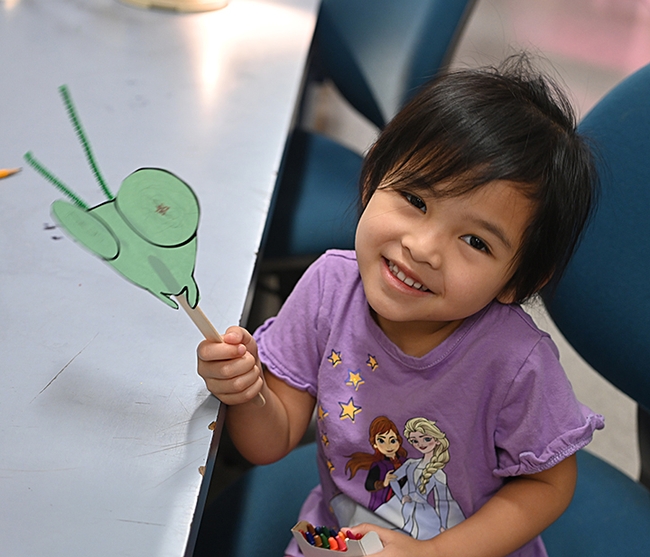
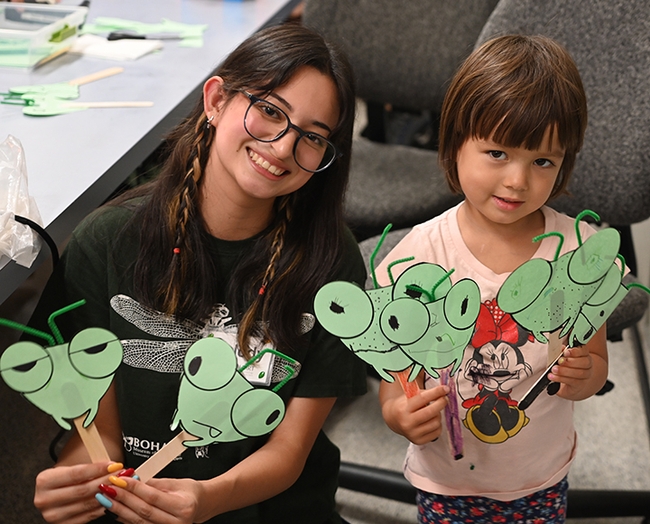
- Author: Kathy Keatley Garvey

The event, "A Night at the Museum," is free and family friendly. It takes place in several places: (1) inside the insect museum, located in Room 1124 of the Academic Surge Building, 455 Crocker Lane, UC Davis campus; (2) in the hallway of the Academic Surge Building; (3) directly outside the building for the blacklighting display; and (4) in the nearby Wildlife Classroom (Department of Wildlife, Fish and Conservation Biology) for a insect drawing demonstration.
The focus is on moths as this is National Moth Week. Entomologist Jeff Smith, who curates the Lepidopterist collection, will be in "the moth aisle" with Bohart associate and naturalist Greg Kareofelas to show specimens and answer questions.
At the Bohart table, inside the museum, fly experts from around the world--including dipterists at the California Department of Food and Agriculture--will answer your questions and show specimens. They were in Reno to participate in the 10th International Dipterology Congress, held July 16-21.
The hallway will be a plethora of exhibits and activities.
- There will be a memorial to the late international moth authority, Jerry Powell, former director of the Essig Museum of Entomology, UC Berkeley, who died July 8 at age 90. "Jerry's rearing program was the most extensive in the history of the study of New World Microlepidoptera," according to an Essig post. "For over 50 years he and his students processed more than 15,000 collections of larval or live adult Lepidoptera. Resulting data encompass more than 1,000 species of moths, through rearing either field-collected larvae or those emerging from eggs deposited by females in confinement. This total includes more than 60% of an estimated 1,500 species of Microlepidoptera occurring in California."
- Visitors can hold the tenants of the live insect petting zoo, including Madagascar hissing cockroaches and walking sticks and take selfies.
- Science educator and entomologist Nazzy Pakpour, who holds a bachelor's degree in entomology from UC Davis, and a doctorate in microbiology, virology, and parasitology from the University of Pennsylvania and did postdoctoral research at UC Davis, will be showcasing her new children's book, "Please Don't Bite Me! Insects That Buzz, Bite and Sting. The book is illustrated by Owen Davy. "All proceeds of book sales will go to the Bohart Museum, thanks to Nazzy's generosity," said Tabatha Yang, education and outreach coordinator. (See Pakpour's biography on One Aggie Network). Pakpour was a member of a collaborative team who worked on a malaria-proof mosquito that made Time Magazine's "50 Best Inventions of 2010." See Bug Squad post: "Malaria-Proof Mosquito Takes the Spotlight."
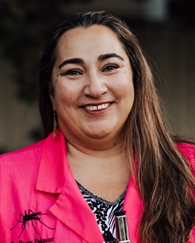 Nazzy Pakpour
Nazzy Pakpour - Microscopes also will be set up in the hallway for visitors to view insect specimens.
Wildlife Classroom: Multiple insect drawing demonstrations, "How to Draw Bugs," will be given Professor Miguel Angel Miranda of the University of the Balearic Islands (UBI), Spain, who just returned from the International Dipterology Congress. He is a zoologist, entomologist and noted insect illustrator.
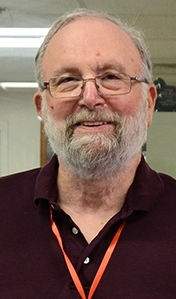
Family Tineidae:
Opogona omoscopa (Opogona crown borer)
Family Tortricidae:
Clepsis peritana
Platynota stultana (omnivorous leafroller)
Cydia latiferreana (filbertworm)
Family Pyralidae:
Achyra rantalis (garden webworm)
Ephestiodes gilvescentella (dusky raisin moth)
Cadra figuliella
Family Geometridae:
Digrammia muscariata
Family Noctuidae:
Spodoptera exigua (beet armyworm)
Spodoptera praefica (western yellow-striped armyworm)
Parabagrotis formais
Also outdoors, sidewalk chalking will take place. Free hot chocolate and cookies will be served.
The museum, directed by UC Davis distinguished professor Lynn Kimsey, houses a global collection of eight million insects; an insect petting zoo; and a year-around insect-themed gift shop.
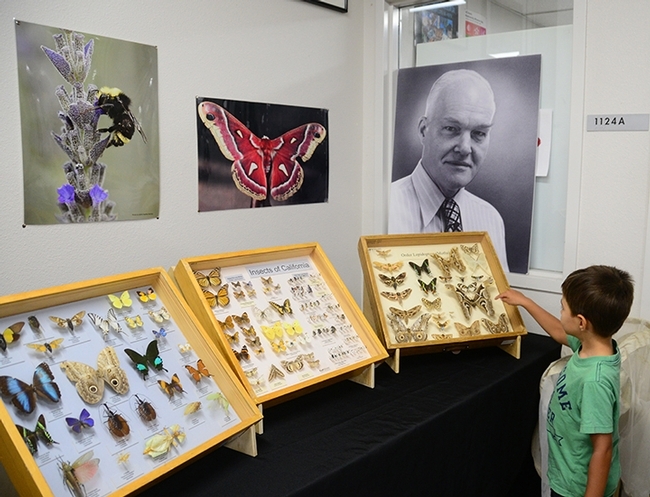
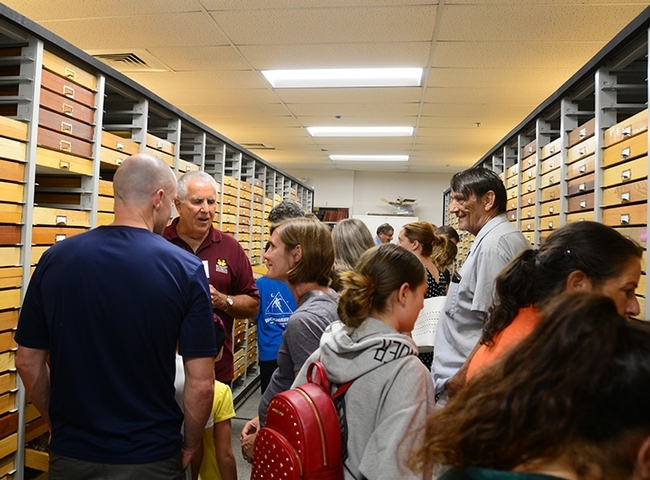
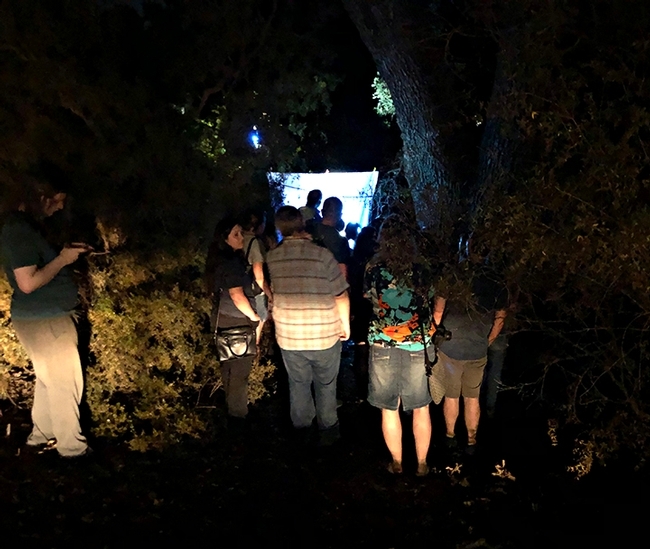
- Author: Kathy Keatley Garvey
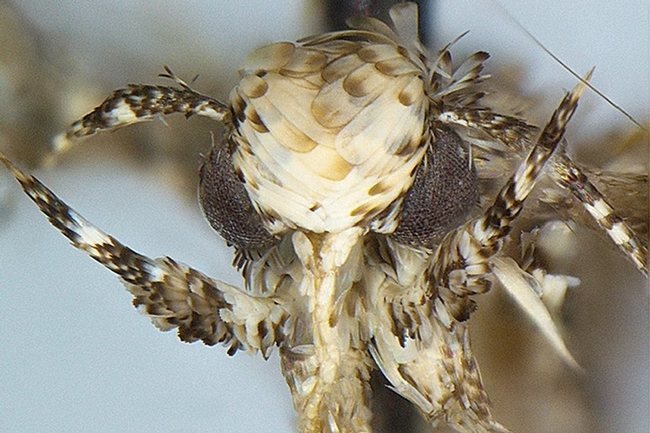
The Bohart Museum of Entomology open house on Saturday night, July 22, promises to be a fun and educational event. It's free and open to the public.
The open house, celebrating National Moth Week, will take place from 8 to 11 p.m. in Room 1124 of the Academic Surge Building, and also outside, where two blacklight traps will be set up to collect moths and other insects. The event is free and open to the public and is family friendly.
A $75,000 scanning electron microscope, on loan from Hitachi Corp. for research and outreach, will be available for visitors to see moth scales and other insect parts.
Bohart Museum senior scientist Steve Heydon and two Bohart associates "Moth Man" John DeBenedictis and naturalist-photographer Greg Kareofelas of Davis will set up the light traps and answer questions. Bohart associate Jeff Smith of Sacramento, who curates the butterfly and moth specimens, will field questions about moths and butterflies and show specimens from around the world.
The family craft activity will be to make a moth-shaped window ornament resembling stained glass, said Tabatha Yang, the Bohart Museum's education and outreach coordinator. Free refreshments--hot chocolate, herbal tea and cookies--will be served. Common Grounds of Davis is donating part of the refreshments.
On permanent display is the Trump moth, Neopalpa donaldtrumpi, a relatively new species that Bohart Museum scientists collected at Algodones Dunes, bordering Arizona and the Mexican state of Baja California. Evolutionary biologist and systematist Vazrick Nazari of Canada named it donaldtrumpi because the yellow scales on the tiny moth's head reminded him of the hairstyle of Donald Trump, then president-elect. The orange-yellow moth has a wingspan of less than one centimeter.
Nazari published the piece on the Trump moth Jan. 17, 2016 in the journal Zookeys and explained the name: “The reason for this choice of names is to bring wider public attention to the need to continue protecting fragile habitats in the U.S. that still contain many undescribed species." The Neopalpa donaldtrumpi belongs to the family, Gelechiidae of the Lepidoptera order.
The Bohart Museum, directed by Lynn Kimsey, UC Davis professor of entomology, houses nearly eight million specimens; a year-around gift shop; and a live "petting zoo," including Madagascar hissing cockroaches, walking sticks, and orchid praing mantis and tarantulas.
For more information on the open house, email bmuseum@ucdavis.edu or call (530) 752-0493.
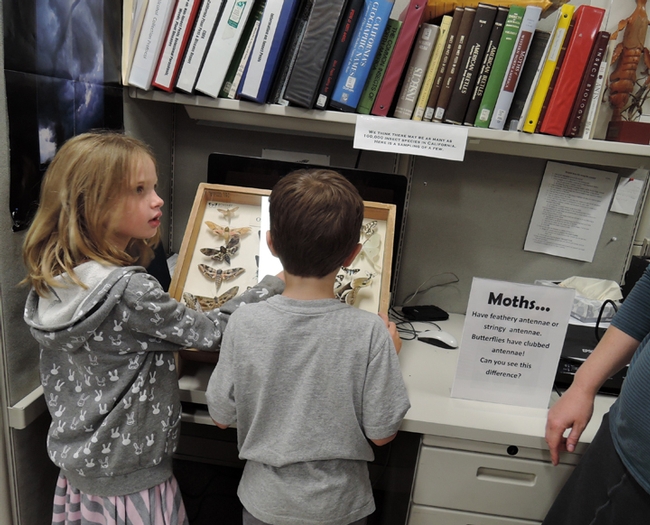
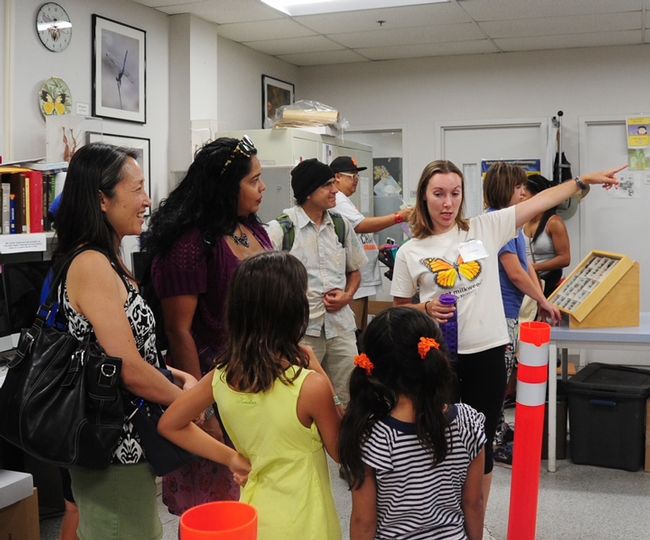
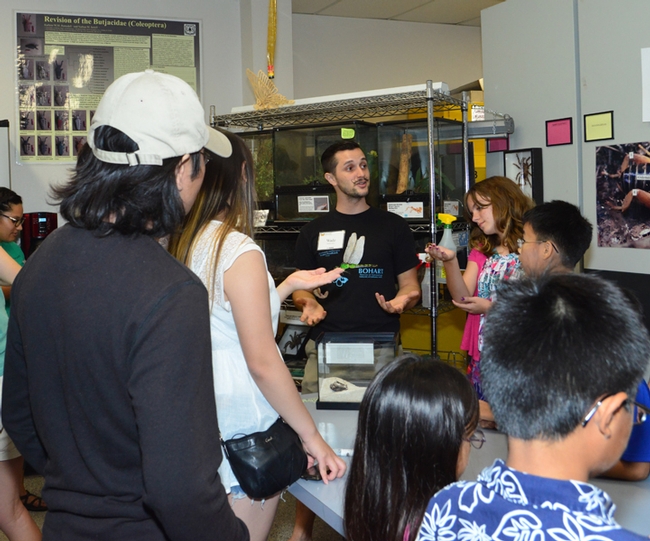
- Author: Kathy Keatley Garvey
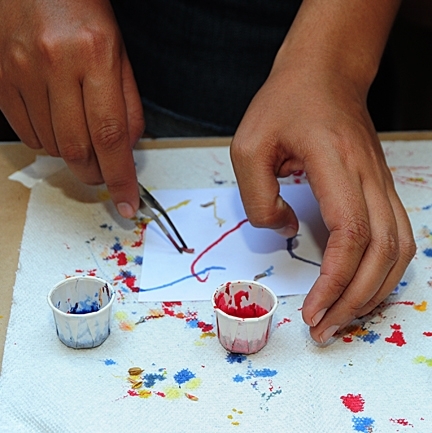
Members of the North American Forensic Entomology Association (NAFEA) will be special guests and presenters at the open house hosted from 1 to 5 p.m., Sunday, July 9 at the Bohart Museum of Entomology.
The event, free and open to the public, takes place in the Bohart Museum, located in Room 1124 of the Academic Surge Building on Crocker Lane, UC Davis campus.
NAFEA is meeting for a conference at UC Davis July 7-12 and the Bohart open house will be part of its outreach activities. The scientists will field questions throughout the event.
"We'll have scientists from across the country here at this family-friendly event,” said Tabatha Yang, the Bohart Museum's education and outreach coordinator. Family arts and crafts activities are featured at each open house. A popular activity planned for the July 9th open house is maggot art, in which maggots are dipped into non-toxic, water-based paint and placed on a “canvas” (paper) to crawl around and create a painting. The activity, coined by entomologist Rebecca O'Flaherty, a former graduate student at UC Davis, is a traditional part of the UC Davis Department of Entomology and Nematology's Briggs Hall offerings at the campuswide UC Davis Picnic Day.
Forensic entomologist Robert Kimsey of the UC Davis Department of Entomology and Nematology served as president of the organization in 2015. (See news feature about Kimsey, "The Fly Man of Alcatraz.") Current president is Jason Byrd of the Department Pathology, Immunology and Laboratory Medicine University of Florida College of Medicine. The goal of NAFEA is to promote the development of forensic entomology throughout North America and to encourage co-operation with other similar international bodies. NAFEA defines its mission as “to provide a cooperative arena for forensic entomologists to interact and collaborate in ways that enhance the science, moral and ethical foundation, and reputation of forensic entomology.”
The fly photo below is of a male flesh fly (Sarcophagidae), "very likely genus Sarcophaga" (http://bugguide.net/node/view/458576/bgimage), according to senior insect biosystematist Martin Hauser of of the Plant Pest Diagnostics Branch, California Department of Food and Agriculture.
The July 9th open house is one of three open houses scheduled this summer. The others are:
Saturday, July 22, Moth Night from 8 to 11 p.m.: Moth Night, held in conjunction with National Moth Week, will enable visitors to explore nighttime nature through a blacklighting setup, enabling the collection of moths and other insects. The event takes place in the courtyard in back of the Bohart Museum. The museum will be open throughout Moth Night.
Sunday, Aug. 27: Bark Beetles and Trees, Forest Health in California, from 1 to 4 p.m.: The event is in collaboration with Steve Seybold, USDA Forest Service entomologist and an associate of the UC Davis Department of Entomology and Nematology. He and his students and staff will be there to show displays and answer questions.
The Bohart Museum, directed by Lynn Kimsey, professor of entomology at UC Davis, houses a global collection of nearly eight million specimens. It is also the home of the seventh largest insect collection in North America, and the California Insect Survey, a storehouse of the insect biodiversity. Noted entomologist Richard M. Bohart (1913-2007) founded the museum.
Special attractions include a “live” petting zoo, featuring Madagascar hissing cockroaches, walking sticks and tarantulas. Visitors are invited to hold the insects and photograph them.
The museum's gift shop, open year around, includes T-shirts, sweatshirts, books, jewelry, posters, insect-collecting equipment and insect-themed candy.
The Bohart Museum's regular hours are from 9 a.m. to noon and 1 to 5 p.m. Mondays through Thursdays. The museum is closed to the public on Fridays, Saturdays and Sundays and on major holidays. Admission is free.
More information on the Bohart Museum is available by contacting (530) 752-0493 or email bmuseum@ucdavis.edu.
Traffic: Note that Old Davis Road that goes past the Visitors' Information Center will be closed due to construction of a paving project (https://www.ucdavis.edu/news/paving-project-close-old-davis-road/) Visitors should enter the campus via Highway 113 and take the Hutchison exit. The parking lot closest to the Bohart Museum is Lot 46.
